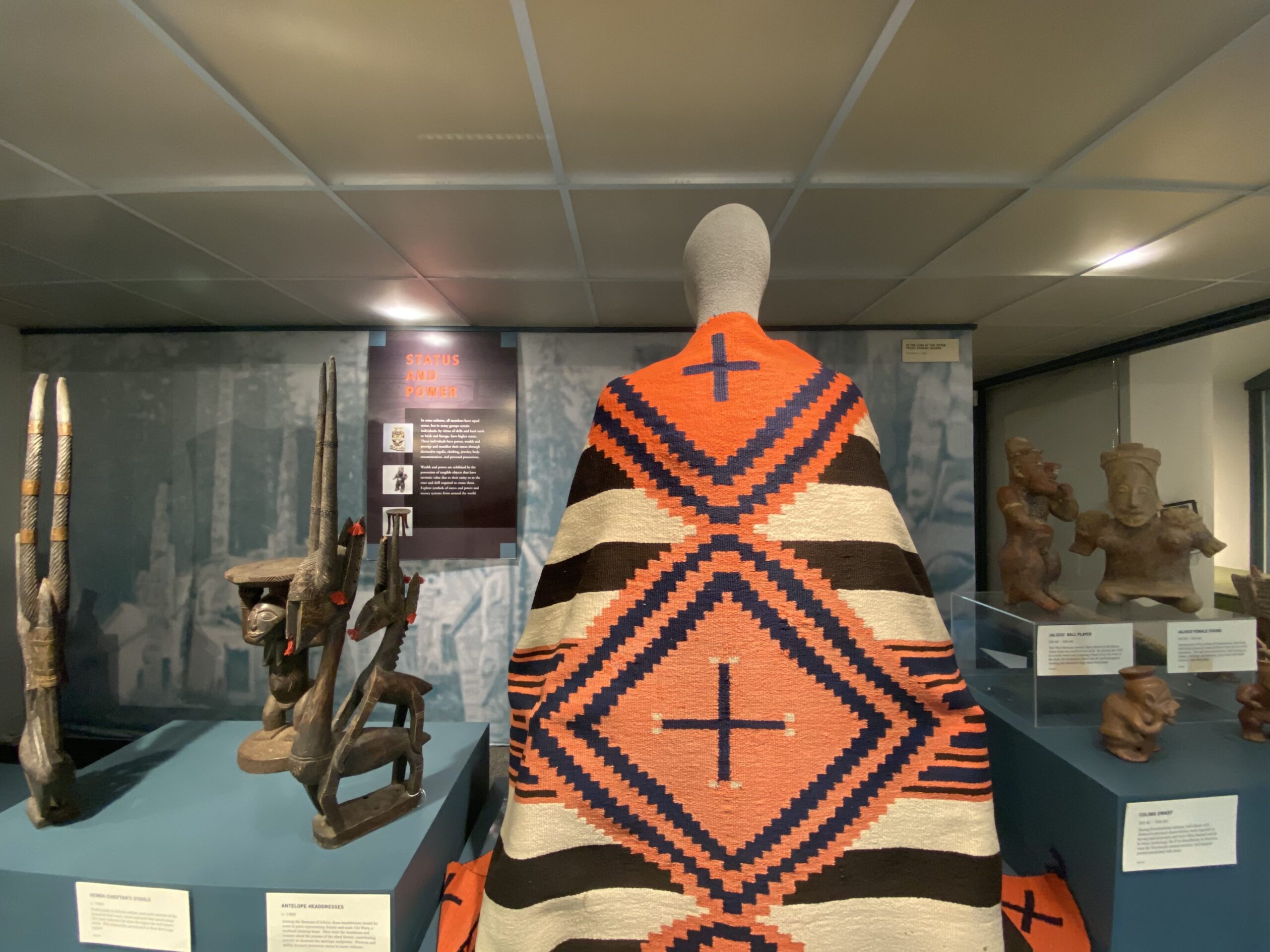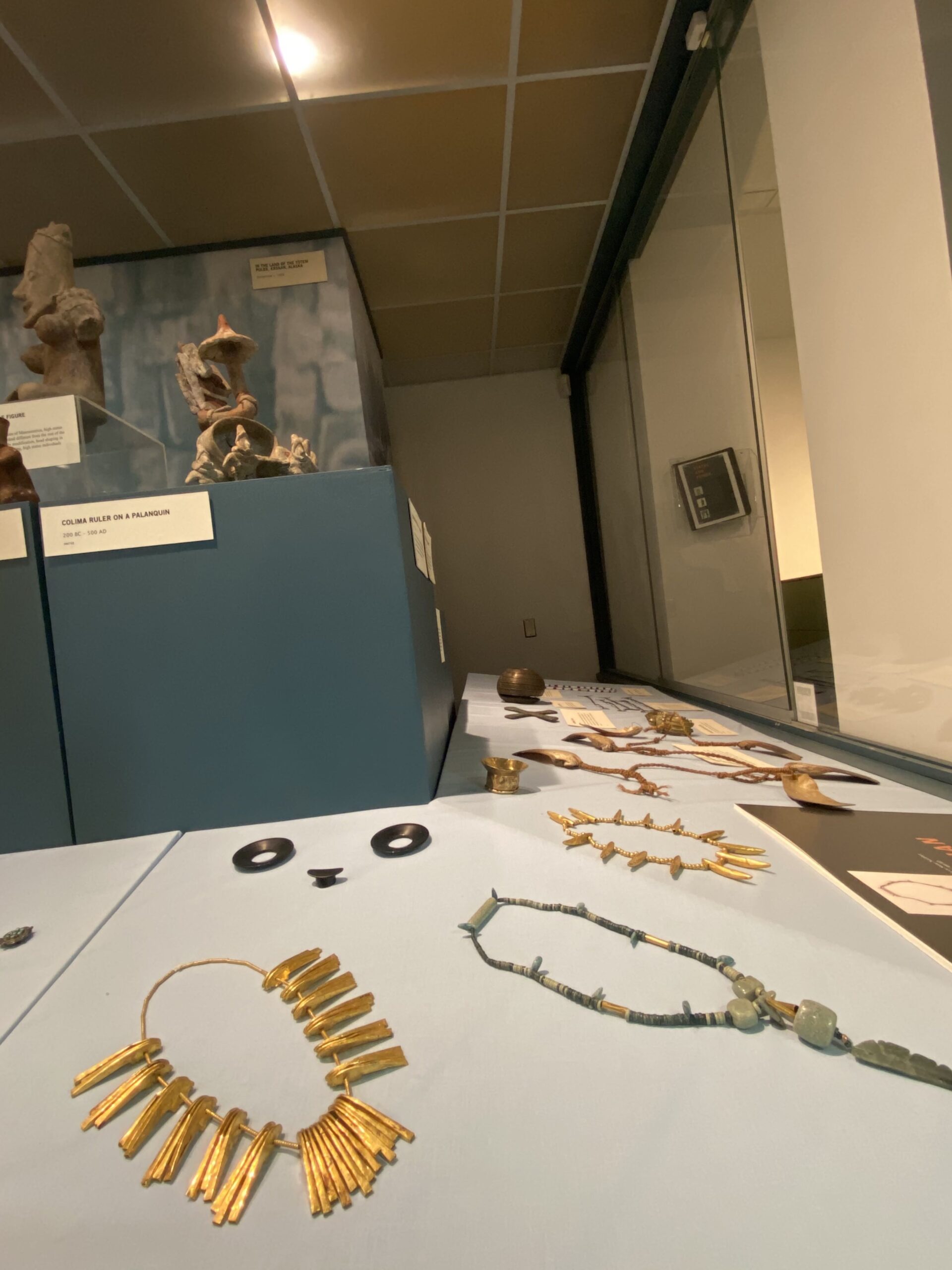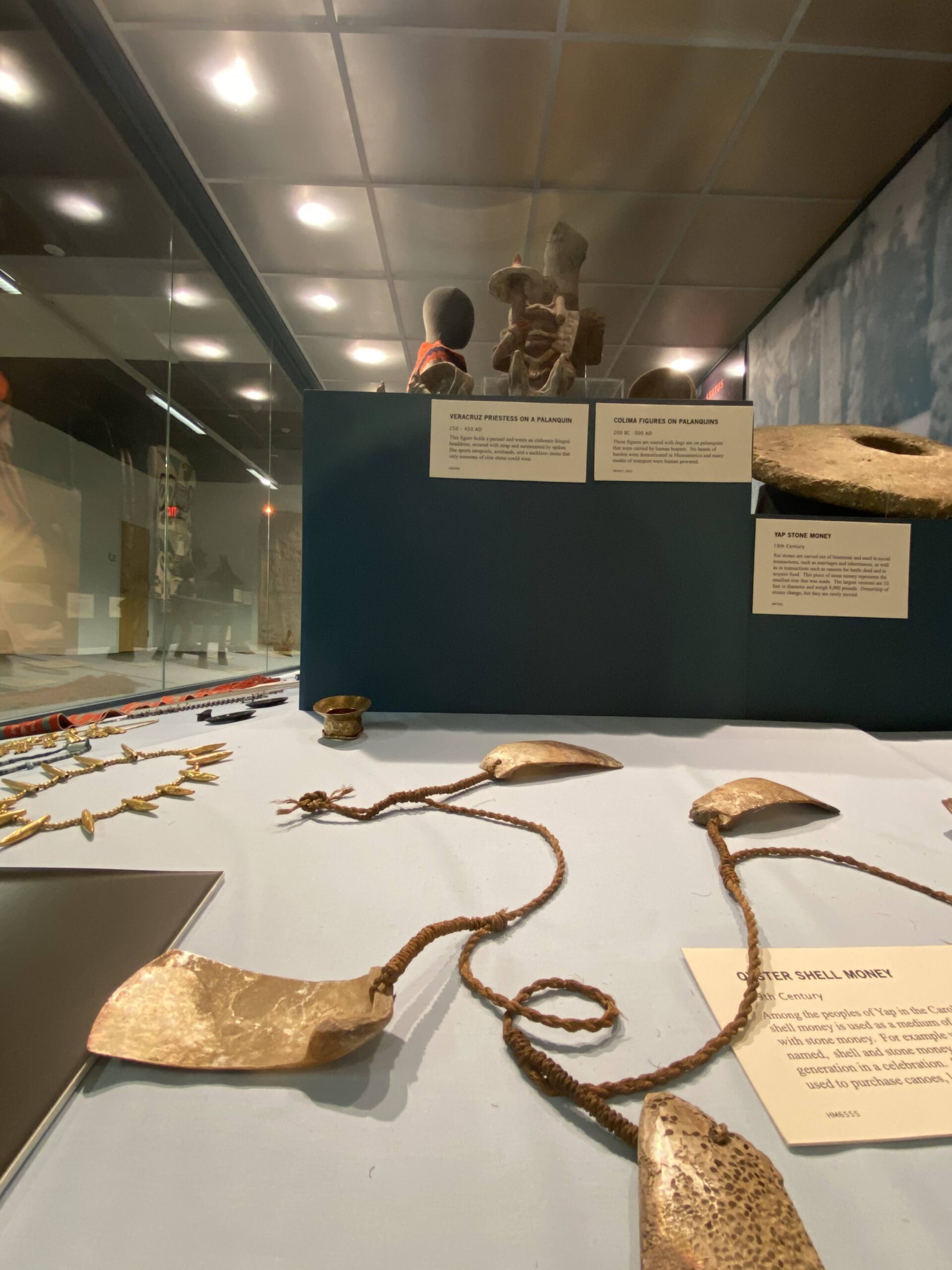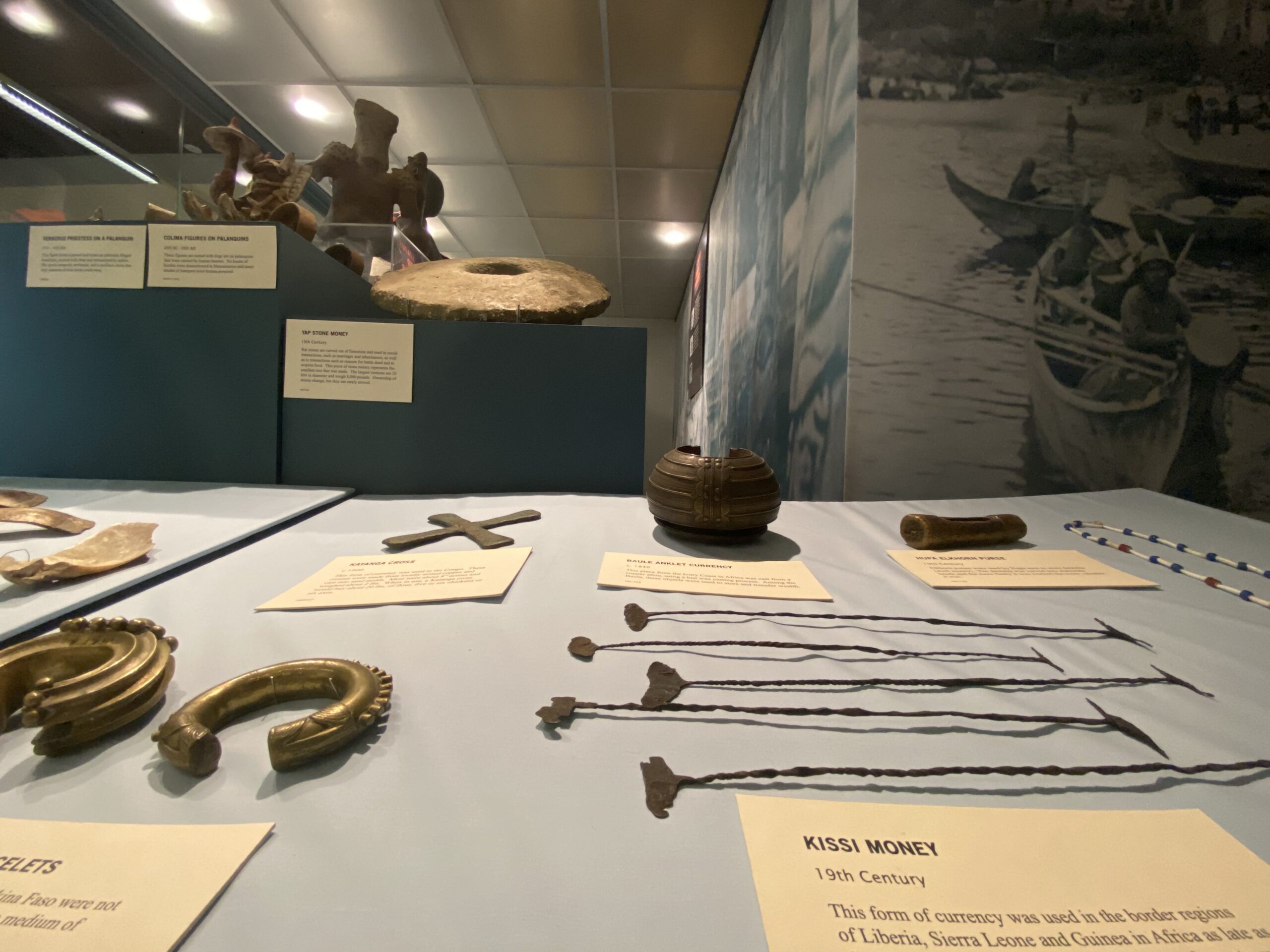Activity 2 – Status and Wealth
Most cultures consider status and power very important. This often (though not always) translates to wealth. Wealth can be expressed in many ways. Clothing is one example — someone with more power might wear more elaborate or decorated clothing that incorporates rare or difficult-to-produce materials. For example, a lot of work went into making the Navajo chief’s blanket you can see in the picture to the right.
We often think of wealth in terms of money, or currency. Currency is a physical form of money that can be exchanged for goods and services. Cultures had very different ideas of what “wealth” meant. Modern-day Americans, for example, might connect wealth with paper (or digital!) money, but currency is relatively new to history. Other cultures might instead use control of material goods or natural resources to communicate the same idea.

Can you think of examples of materials or resources that might be considered valuable? If you said gold, silver, or precious stones, then you’d be right! Some cultures would fashion such materials into jewelry, creating a sort of “wearable bank account.” Other cultures, however, used things such as beads, feathers, shells, or bones as currency. You can see various forms of currency in the photos below, including oyster shell and stone money from the island of Yap. Currency does not have value beyond what it is given by people’s willingness to trade material goods for it.
Many cultures instead used bartering, directly trading goods and services (for example, a few fish for a new rope). Studying and analyzing money, currency, and systems of bartering can tell Anthropologists a lot about what a culture considers valuable, what resources are close by, and whether they’ve been in contact with other cultures.
Activity Time!
Give it a shot yourself! Go to the Status and Wealth activity in your Research Notes. You’ll need at least one other person and a few things to trade. Pay attention to what gives things value – are things worth more if there are fewer of them? Do they have different values to different people?



